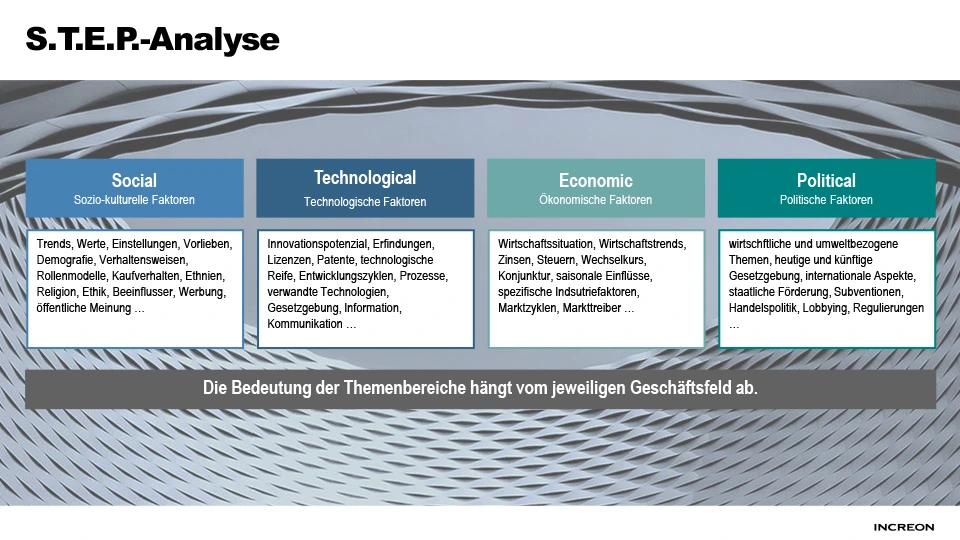Naming Analysis
The information from brand analysis relevant to the name, which consists of market environment analysis and brand environment analysis, creates the foundation for successful naming.


NAMING-RELEVANT BRAND ANALYSIS.
Know the market and brand environments.
The better one knows the market in both a narrow and broader sense, the better one can develop one’s own naming strategy. For brand and marketing communication over the long term, which later builds on a memorable brand name and a strong brand identity, the factors relevant to marketing have to be known. We take a look in two directions — the macro environment and the micro environment. The focus of attention during brand analysis pertinent to naming is always on names in the competitive environment, on typical expressions, and on technical terms and jargon, around the world.
Analysis of the macro environment
When analyzing the macro environment, against the backdrop of the naming process, at the naming agency we essentially look at four fields:
- Social environment: Trends. Demographics. Target audiences. Attitudes and opinions. Information and communication behavior. Factors of influence. Decision-making behavior. Brands, companies, and technology images. If need be, ethnic and religious aspects or ethical questions. Geographic and cultural features. Developments in society.
- Technological environment: Developments in technology. Potential for innovation. Substitution of existing technologies and solutions. Licenses and patents. Legislation. Similar developments. Benchmarks. Jargon and technical terminology.
- Business and economic environment: Product development cycles. Product life cycles. Market cycles. Participants in the market. Competitors. Market shares, in segments and niches as well. Distribution channels. Distribution trends. Price-performance aspects.
- Political environment: Ecological and environmental-political aspects. Current legislation in the home market and relevant foreign markets. Trade policies. Lobbies.
During brand analysis relevant to the name, we concentrate at the naming agency on all fields to find out what the relevant target groups are used to, what they understand, where we will be able to take them with the choice of name, and which hurdles there will be to overcome today or in the future. In certain markets, this name-relevant brand analysis can be very short and sweet. In other cases, it is worth taking the time to more precisely analyze the market and brand environment with a view to naming. This depends on the respective company and product.
In international markets, it is absolutely imperative to take into account the meaning, associations, understandability, and speakability of a new name.
Analysis of the micro environment
The analysis of the micro environment focuses on the company itself or on the product or service that needs to be named. Are there normative guidelines in the company? What are the company’s vision, mission, and guiding principles? What image does the company have in the market? What is the current market position and what market position should be achieved? With which products or services? What competencies are attributed to the company and its products? And of course, everything about the new company or the new product or the new product range or the new service must be explained.
The opportunities and risks of the market in general and the strengths and weaknesses of the company as well as those of the competitors enable the assessment of the market performance within the scope of the brand analysis. Essential information for the naming work in the agency can be derived from the naming-relevant market environment analysis and brand environment analysis. For only when the market, competitors, and developments are known can ideas emerge that stand out in the market.






